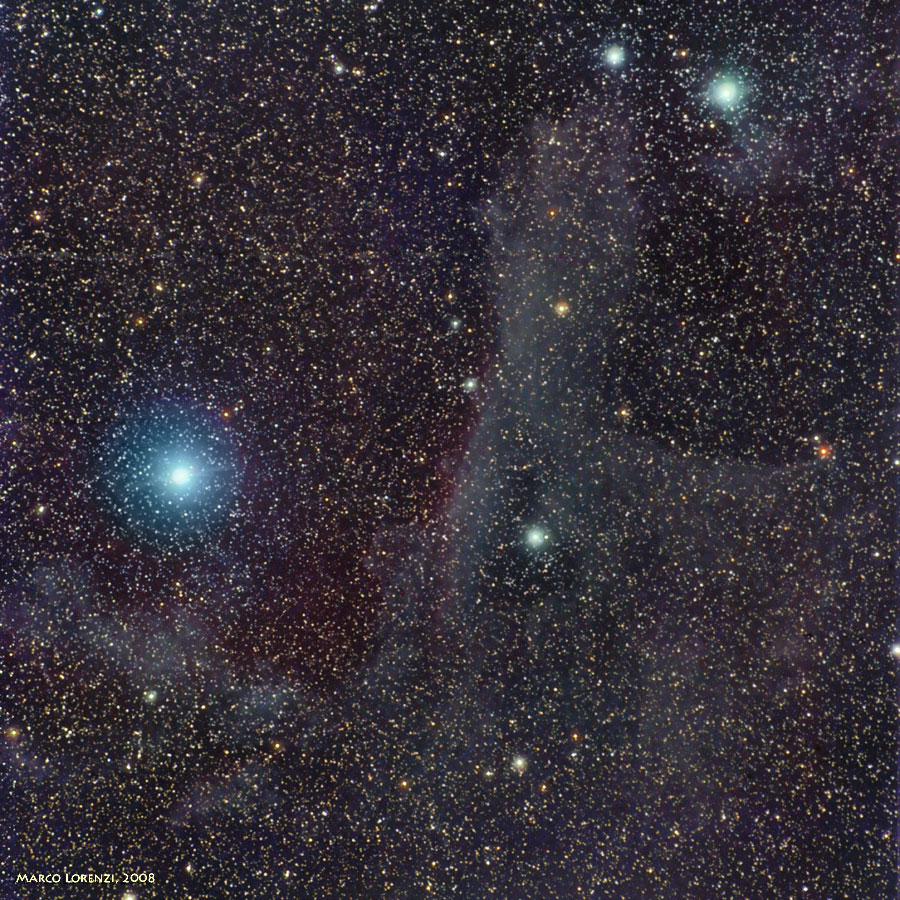
Sharpless 1
Field centered on R.A. 15h 58' & Dec. -25° 30'

Wisps of dust fill the space between the stars. This dust is usually invisible, subtly acting to dim the light of more distant stars. Sometimes this dust is thick and prominent as dark patches on otherwise bright emission nebulae. Other times this dust may show itself by reflecting the light of bright, nearby stars. Because bright stars tend to be blue, and because dust reflects blue light more easily than red, the resulting reflection nebula usually appears blue. Pictured above is the reflection nebula Sharpless 2-1 in the constellation of Scorpius (text adapted from APOD). This image is the last of the set made in July 2008. Conditions were troublesome, since due to the high relative humidity it was impossible to cool down the camera much below the ambient Temperature without the formation of dew on the camera optical window. Therefore all subframes were taken at a very high chip temperature of + 10C! Furthermore the relative height of this object from the horizon was merely 15 degrees and the process had to correct several gradients and consider the strong color extinction of the atmosphere. |
Instrument: |
CCD: |
Exposition: |
Filter: |
Site: |
Author: |
| Apo TEC140 (140/f7) + AP MACH1 | FLI Microline 16803, binning 1x1, T=+10°C | L (60m) R (20m) G (20m) B (20m) | Astrodon LRGB filter set | Isola del Giglio, Grosseto, Italy |
M.Lorenzi |
All of the photographs and text on these pages are copyrighted by Marco Lorenzi.
They may not be reproduced, published, copied or transmitted
in any form, including electronically on the Internet or World Wide
Web, without written permission of the author. |